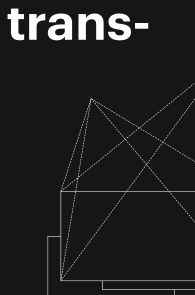open access
메뉴
open access
메뉴 ISSN : 2508-3309
ISSN : 2508-3309
This study investigates the methods for deriving colors which can serve as a reference to users such as designers and or contents creators who search for online images from the web portal sites using specific words for color planning and more. Two experiments were conducted in order to accomplish this. Digital scenery photos within the geographic scope of Korea were downloaded from web portal sites, and those photos were studied to find out what colors were used to describe daytime and nighttime. Machine learning was used as the study methodology to classify colors in daytime and nighttime, and KSCA was used to derive the color frequency of daytime and nighttime photos and to compare and analyze the two results. The results of classifying the colors of daytime and nighttime photos using machine learning show that, when classifying the colors by 51~100%, the area of daytime colors was approximately 2.45 times greater than that of nighttime colors. The colors of the daytime class were distributed by brightness with white as its center, while that of the nighttime class was distributed with black as its center. Colors that accounted for over 70% of the daytime class were 647, those over 70% of the nighttime class were 252, and the rest (31-69%) were 101. The number of colors in the middle area was low, while other colors were classified relatively clearly into day and night. The resulting color distributions in the daytime and nighttime classes were able to provide the borderline color values of the two classes that are classified by brightness. As a result of analyzing the frequency of digital photos using KSCA, colors around yellow were expressed in generally bright daytime photos, while colors around blue value were expressed in dark night photos. For frequency of daytime photos, colors on the upper 40% had low chroma, almost being achromatic. Also, colors that are close to white and black showed the highest frequency, indicating a large difference in brightness. Meanwhile, for colors with frequency from top 5 to 10, yellow green was expressed darkly, and navy blue was expressed brightly, partially composing a complex harmony. When examining the color band, various colors, brightness, and chroma including light blue, achromatic colors, and warm colors were shown, failing to compose a generally harmonious arrangement of colors. For the frequency of nighttime photos, colors in approximately the upper 50% are dark colors with a brightness value of 2 (Munsell signal). In comparison, the brightness of middle frequency (50-80%) is relatively higher (brightness values of 3-4), and the brightness difference of various colors was large in the lower 20%. Colors that are not cool colors could be found intermittently in the lower 8% of frequency. When examining the color band, there was a general harmonious arrangement of colors centered on navy blue. As the results of conducting the experiment using two methods in this study, machine learning could classify colors into two or more classes, and could evaluate how close an image was with certain colors to a certain class. This method cannot be used if an image cannot be classified into a certain class. The result of such color distribution would serve as a reference when determining how close a certain color is to one of the two classes when the color is used as a dominant color in the base or background color of a certain design. Also, when dividing the analyzed images into several classes, even colors that have not been used in the analyzed image can be determined to find out how close they are to a certain class according to the color distribution properties of each class. Nevertheless, the results cannot be used to find out whether a specific color was used in the class and by how much it was used. To investigate such an issue, frequency analysis was conducted using KSCA. The color frequency could be measured within the range of images used in the experiment. The resulting values of co